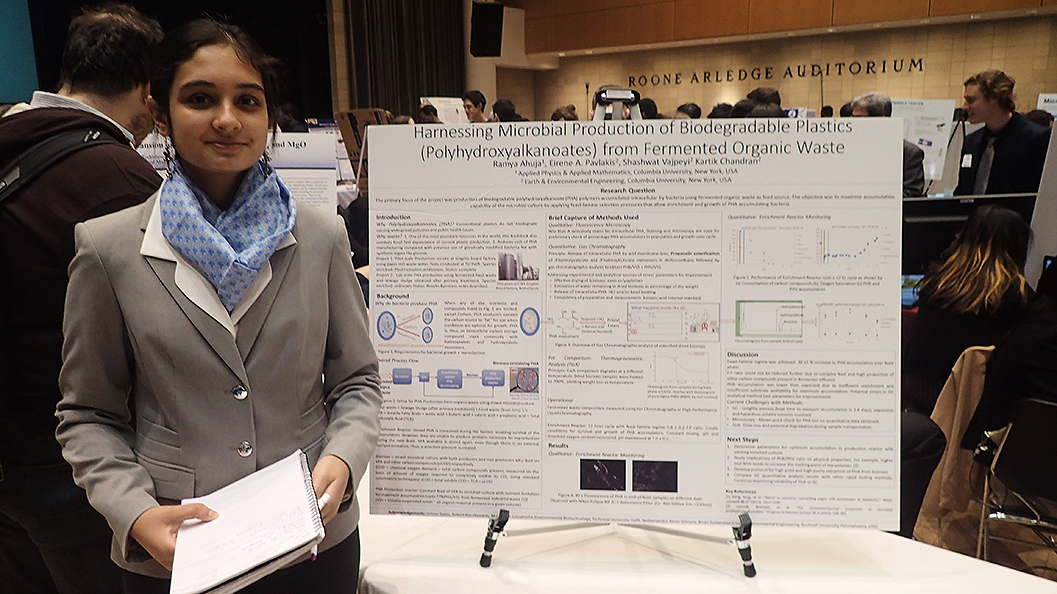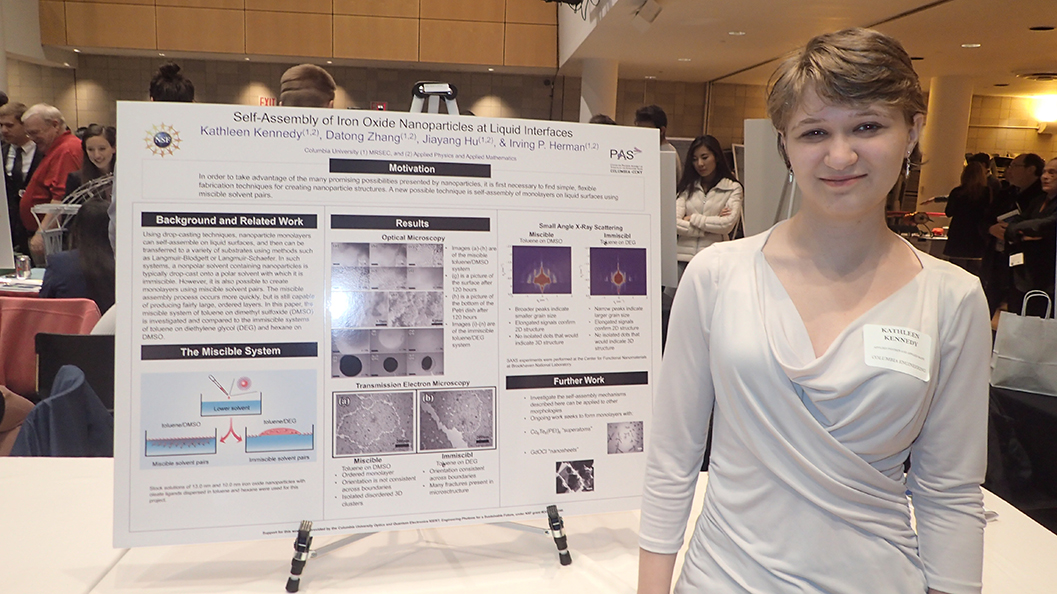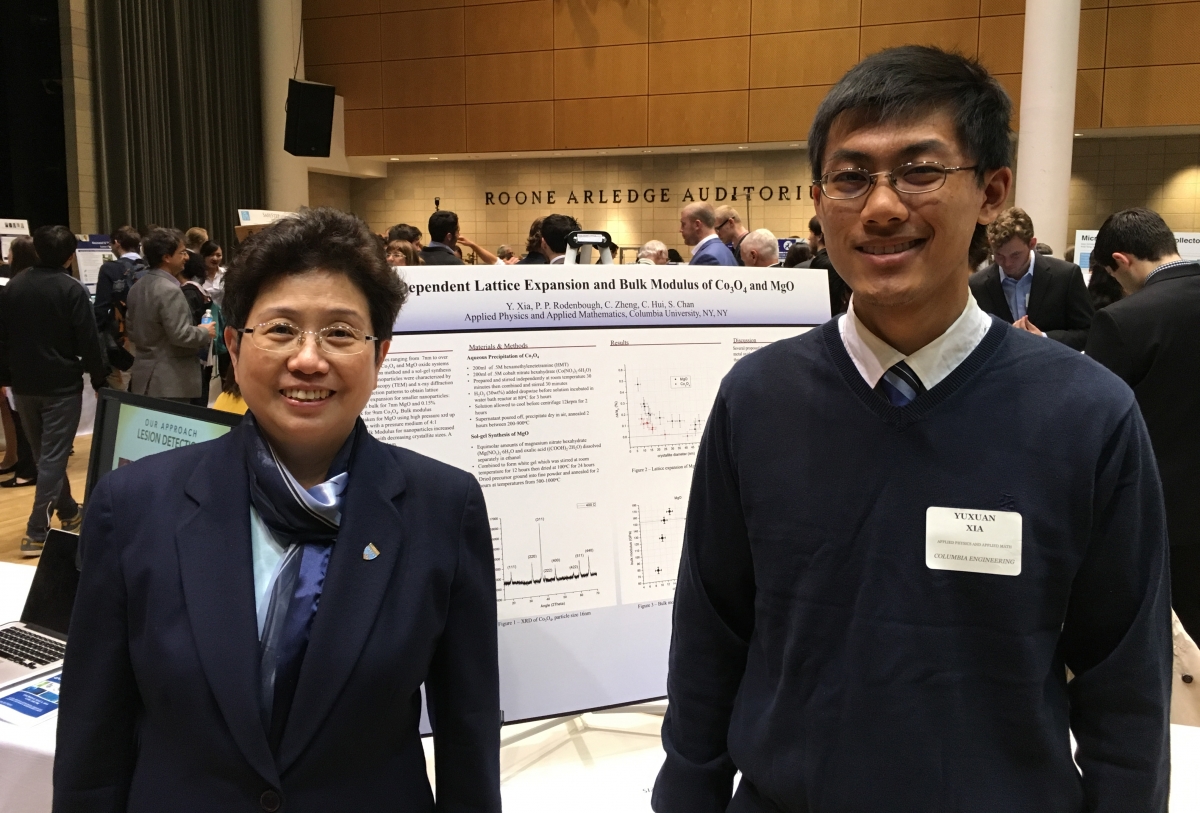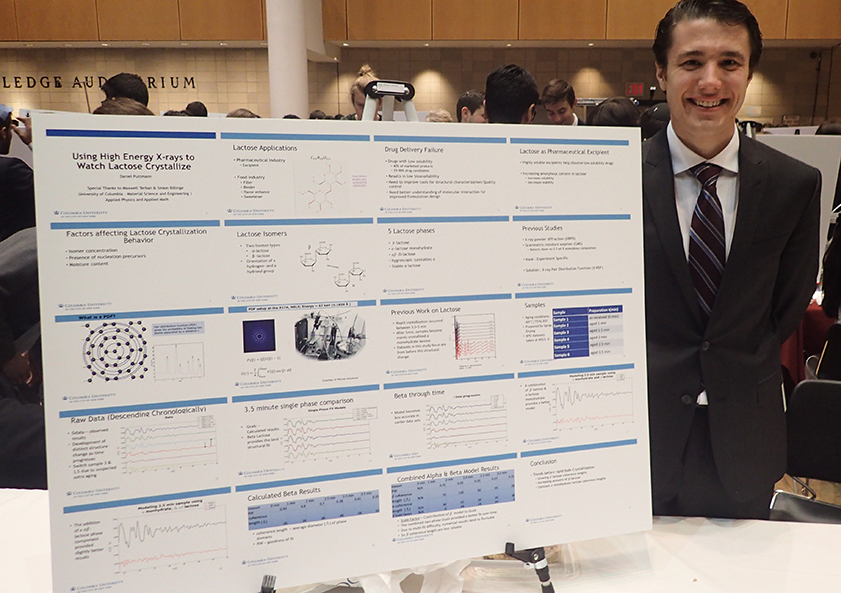2016 Senior Design Expo
|
Materials Science students participated in the 2016 Senior Design Expo |
|
"Nanostructure Enhanced Polymer Coatings to Induce Passive Cooling"
Dillon Kraus The research entails creating a very thin coating comprised of polymer embedded with nanostructures of various materials, which has been designed to maximize reflectivity in the visible region of the electromagnetic spectrum, so as to reflect high intensity sunlight, as well as emissivity in the mid-infrared region of the spectrum, i.e. the region of most thermal radiation on earth. The motivation for this is to minimize the amount of heat the coated object will absorb, and maximize the amount of heat it releases, ultimately enabling a passive cooling effect. This has been done by carefully selecting the nanoparticle material compositions, as well as shapes, in addition to picking the best polymer for this type of function. |
 "Protocol Development for Analysis of Microbial Biodegradable Polymer Production from Waste Feedstock" "Protocol Development for Analysis of Microbial Biodegradable Polymer Production from Waste Feedstock"
Ramya Ahuja Both research projects focused on production of biodegradable polymers accumulated by bacteria within their cells using organic waste as feed source. The objective was to maximize accumulation capability of microbial culture by applying feast-famine selection pressures that allow enrichment and growth of PHA accumulating bacteria. This sub-study focused on identification and optimization of methods for rapid measurement of accumulation during experiments to characterize the process. A related question was how the errors (systemic and human) could be quantified to determine reliability of the final measurement. Samples collected from different stages of the PHA production process were esterified and the monomers extracted to be analyzed using gas chromatography. For protocol development tests were undertaken to confirm effective drying of biomass by oven, accurate estimation of any remaining fluid as percentage of dried sample, release of intracellular PHA before esterification and consistency of preparation and measurement. Information regarding percentage of PHA was obtained over the cycle of enrichment and accumulation. This enabled the creation of a feedback loop with the design and operation of the pilot, informing future experimentation with the set-up. Data obtained was compared to that of thermogravimetric (TGA) analysis of the same biomass samples. A supplementary method for qualitative in situ analysis of intracellular PHA was developed based on selective staining by Nile Blue A and fluorescence imaging with DsRed (ex 558nm, em 583nm). |
 "Self-Assembly of Iron Oxide Nanoparticles at Liquid Interfaces" "Self-Assembly of Iron Oxide Nanoparticles at Liquid Interfaces"
Kathleen Kennedy Self-assembly of nanoparticle monolayers at liquid interfaces using immiscible solvents is a fairly well established technique. In this project, certain miscible solvent pairs were also found to result in ordered monolayers. The assembly processes of immiscible and miscible systems were investigated and compared using optical microscopy. Samples were then taken from each system and characterized using transmission electron microscopy (TEM) and grazing incidence small angle x-ray scattering (SAXS). Further work has begun investigating how these assembly techniques can be adapted for use with superatoms and nanosheets. |
 "Size Dependent Lattice Expansion and Bulk Modulus of "Size Dependent Lattice Expansion and Bulk Modulus ofCo3O4 and MgO" Yuxuan Xia Uniform crystalline nanoparticles ranging from 7nm to over 100nm were prepared for the Co3O4 and MgO oxide systems using an aqueous precipitation method and a sol-gel synthesis method respectively. The nanoparticles were characterized by transmission electron microscopy (TEM) and x-ray diffraction (XRD). Analysis of diffraction patterns to obtain lattice parameter shows lattice expansion for smaller nanoparticles: 0.47% expansion from bulk for 7nm MgO and 0.15% expansion from bulk for 9nm Co3O4. Bulk modulus measurements were taken for MgO using high pressure xrd up to a pressure of 10GPa with a pressure medium of 4:1 Methanol: Ethanol. Bulk Modulus for nanoparticles increased then decreased from bulk with decreasing crystallite sizes. A maximum is reached around 14nm. |
 "Towards a Graphene Oxide Membrane Made "Towards a Graphene Oxide Membrane MadeImpermeable to Water" Adam Jaffe Graphene oxide has been shown to be permeable to water, even while it is impermeable to other liquids, vapors, and gases, including helium. The goal of the project was to design a layered material, based on graphene oxide, which would be impermeable to water as well as the other liquids, vapors, and gases. |
 "Using High Energy X-rays to Watch Milk Sugar Crystallize" "Using High Energy X-rays to Watch Milk Sugar Crystallize"
Daniel Puttmann Amorphous dispersions are critical to improving the performance of food and pharmaceutical products. However, they are highly unstable and tend to turn back to their crystalline counterparts. In this study, a high energy X-ray probe is used to watch the structural development as amorphous lactose molecules begin to order and crystallize. By understanding this behavior, processes can be designed to enhance the shelf life of life saving drugs and taste-bud saving foods. |
